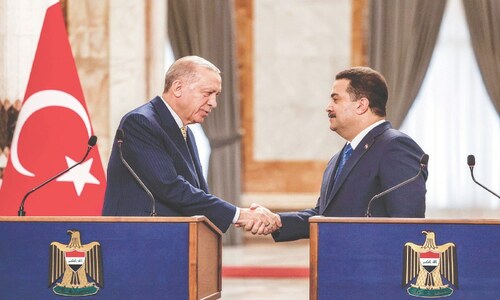The United States dropped a 21,600-pound GBU-43 bomb, one of the largest non-nuclear devices used in combat, on a suspected target of the militant Islamic State group in Afghanistan on Thursday.
Here are some details about the bomb, based on information from the US military, independent security think-tanks and media reports.
EXPLODING ABOVE THE GROUND
Described by the US Air Force as its “largest non-nuclear conventional weapon”, the 9,840 kg Massive Ordnance Air Blast Bomb (MOAB) — also dubbed the Mother of All Bombs — is packed with 11 tons of high explosives.
The MOAB is not a bunker buster built for deep penetration, but is designed to explode just above the ground, flattening surfaces structures, destroying mines and killing enemy troops within a radius of up to around 150 metres.
MOAB is also envisaged as a psychological weapon deployed to shock enemy combatants with its power.
The Russian military says it has tested a more powerful device, dubbed the “Father of all Bombs”, although there are no reports of it having been used in action.
“FLATTENER”
Designed in 2003 for use against Iraqi forces, the MOAB succeeded the Vietnam War-era, 15,000 pound BLU-82 “Daisy Cutter”.
Daisy Cutters were primarily dropped to clear landing zones for helicopters operating in the Southeast Asian jungle.
They could flatten a 60-metre wide patch of jungle and destroy mines and other booby traps without leaving a crater. They were also used to stun North Vietnamese or Viet Cong units lying in wait for American troops.
Both the MOAB and Daisy Cutter are dropped from C-130 transport aircraft, with a parachute dragging a pallet holding the bomb out of the back.
Apart from producing a bigger bang than the Daisy Cutter, MOAB is equipped with a GPS guidance system.
The Daisy Cutter was used in the first Gulf War in 1991 and later in Afghanistan, including in the hunt for Osama bin Laden during the Battle of Tora Bora. It was taken out of service in 2008.
BRITISH HERITAGE
The US Air Force’s big air blast bombs and its heavy bunker busters trace their origins back to “earthquake bombs” of World War Two designed by the British.
Also known as “Tallboy” and “Grand Slam”, the devices penetrated deep into the ground with hardened steel casings before exploding. The British Royal Air Force used them to attack strategic German targets.
The larger 22,000-pound Grand Slam became the US military’s T-14, spawning a generation of bunker busters.
The US Air Force also modified the 12,000-pound Tallboy to create the T-10 for use against Imperial Japanese forces in the Pacific. It was put into storage unused when the atomic bombings of Hiroshima and Nagasaki ended the war.
Published in Dawn, April 15th, 2017














































Dear visitor, the comments section is undergoing an overhaul and will return soon.